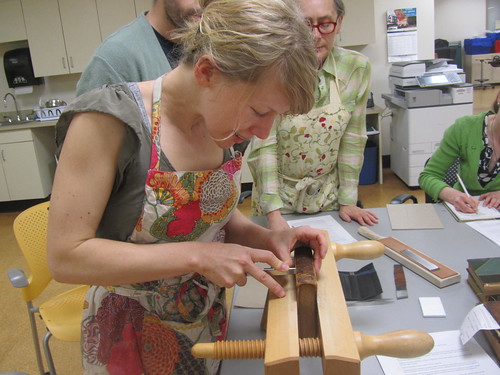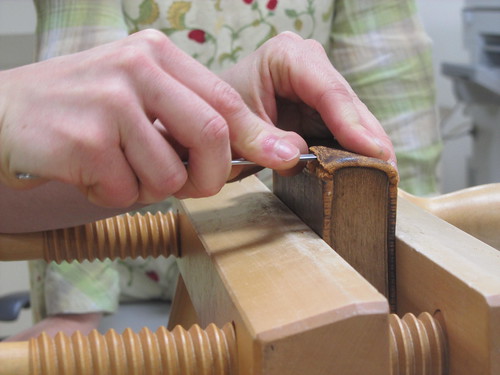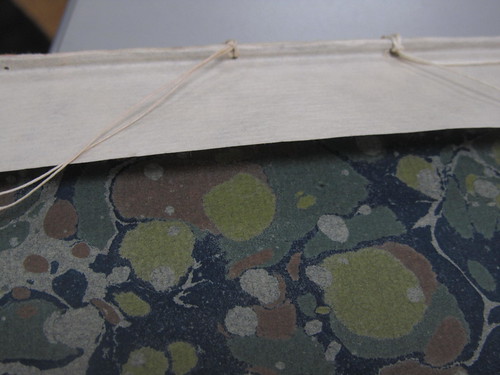This article is more than 5 years old.
Winter is over. It’s time to shake out the kinks: hit a few balls, scoop up a few grounders, run the bases and try to throw the ball from left field to home plate. That kind of thing is what I did this week on a visit to Duke University’s Conservation Services Lab. Thanks to Tanya Zanish-Belcher for encouraging me and to Beth Doyle, the Leona B. Carpenter Senior Conservator and Head, for arranging the training. I was fortunate to have an afternoon with Erin Hammeke, Conservator for Special Collections and the Conservation staff (Tedd Anderson, Rachel Penniman, and Mary Yordy). For me, the afternoon was wonderful and a time to talk turkey with like-minded people.
Erin began with an overview of the types of leather encountered on books from various regions: sheep and calf for American and English bindings; calf and pig for German; goat for Spanish and Italian bindings. Erin advised us to consider the type of leather before attempting a repair as well as using a leather consolidant,like Klucel G (which is the one I use). She then demonstrated sharpening her lifting knife on a leather strop and proceeded to lift the leather from the spine of a book. We all the a chance to practice on discarded books.
Erin demonstrated three techniques for joining loose boards to a leather bound book. These methods are the Etherington tissue hinge( Etherington 1995, 2006), which I have been using, and which employs Japanese tissue internally and externally to re-attach loose boards.
The second method, board tacketing (Espinosa and Barrios 1991) is a technique which involves drilling small holes through the shoulder and loose board of a book and joining them with linen thread.
The third method is the Brock hinge (Brock 2001, 2006) which uses a piece of cloth, attached at the head and tail of a book to strengthen the board attachment.
Following this, Mary Yordy demonstrated a technique that she developed to reinforce the head or tail of a leather bound book. This technique, which uses L-shaped pieces of Japanese paper glued inside the spine, should be very useful when a book is in tact but has a partially damaged spine.
This was a very enlightening and useful training day. I learned some great techniques, discovered a few new tools and materials, and met new friends. Thank you Duke Conservation!




5 Comments on ‘Spring Training at Duke’
Thanks Craig, and thanks Duke!
Tanya
I always enjoy reading about the cool things you preservation types do! And with photos, it’s all the better.
God for you!
Great report, Craig. I will be sure to thank our friends at Duke.
Thanks for the write up, Craig! We really enjoyed having you come visit and thanks for letting us all take part in spring training. I also wrote a blog post about our training session.